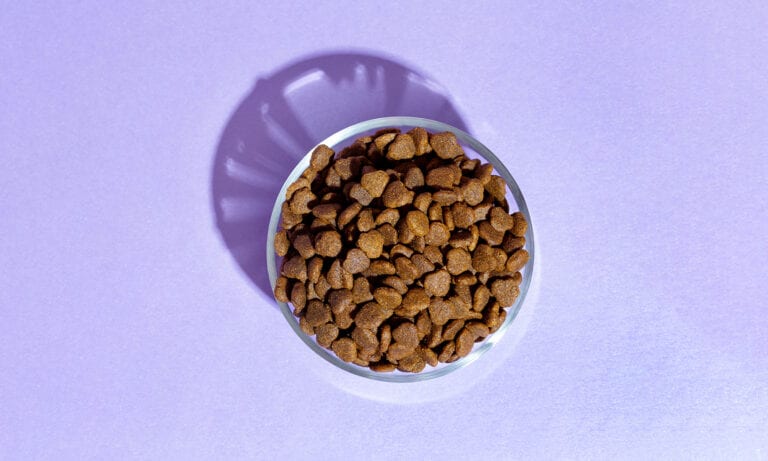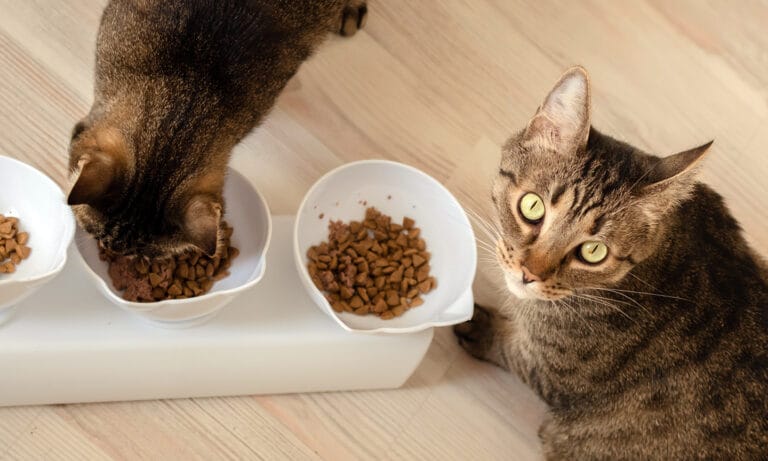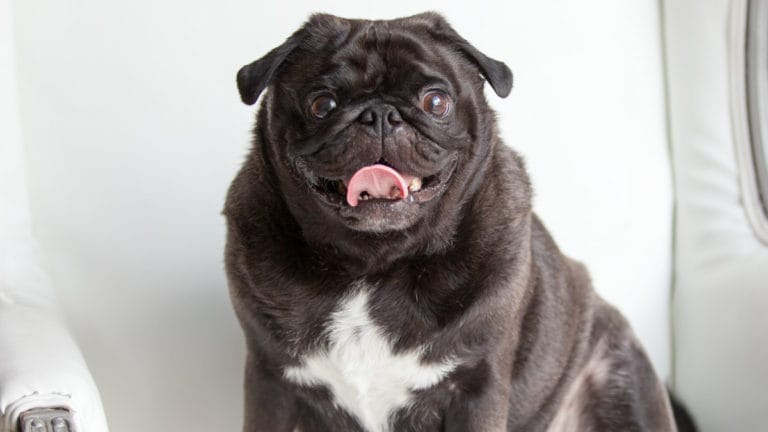As a responsible cat parent, one of the most crucial decisions you’ll make is what to feed your feline friend. One common question you might ponder is, “Do cats need wet food?”
While cats don’t necessarily need wet food to meet their nutrient requirements, wet cat food offers several benefits that can improve a cat’s health. As such, adding wet food to a cat’s menu is ideal in most cases.
We spoke to vet experts to uncover the advantages of incorporating wet food into your kitty’s diet and help you make an informed decision about what’s in your kitty’s bowl.
In This Guide:
Do Cats Need Wet Food?
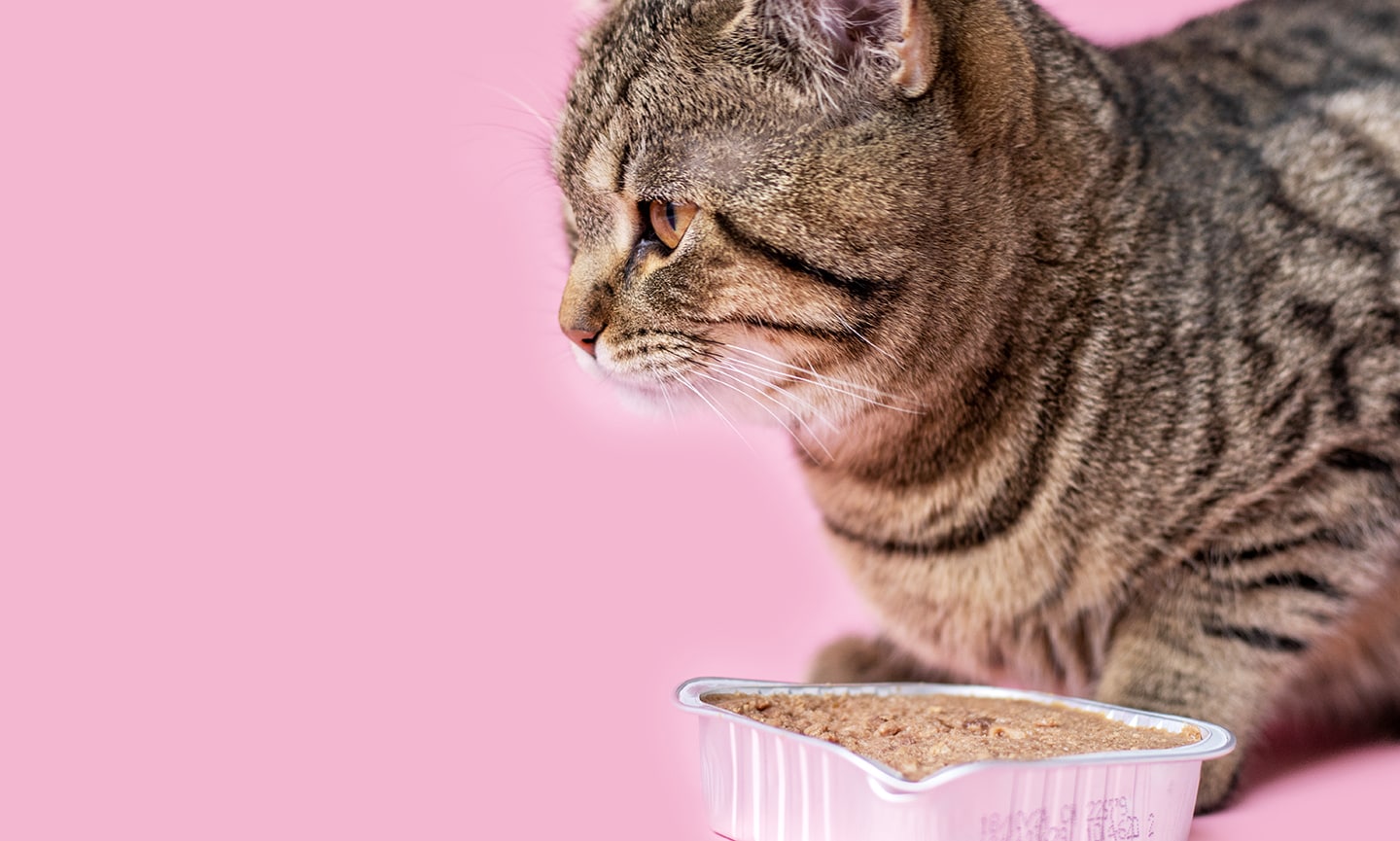
Dry cat food (aka kibble) and wet food (aka canned food) are considered nutritionally complete when the nutritional adequacy statement includes the phrase “complete and balanced” on the label. This means they’re formulated to contain all the nutrients cats require in appropriate ratios.
So, do cats need wet food? “Cats don’t need a certain food type,” says Dr. Emily Luisana, DVM, DACVIM (Nutrition), a veterinary nutritionist at Friendship Hospital for Animals in Washington, DC. “[However,] they do have certain nutritional needs, including essential amino acids, essential fatty acids, and certain vitamins and minerals.” And because they’re obligate carnivores, cats also require meat in their diet. For most cats, those nutritional requirements can be met with either canned or dry food, although some cats do better with one formulation than another due to health reasons or preferences, she adds.
Ultimately, Dr. Luisana recommends cat parents offer both wet and dry food to their kitties to discover their preferences and get them used to both types of food. This approach increases the likelihood of acceptance, should the need arise for a certain specialty diet formulation of canned or dry food in the future, she notes.
Wet Cat Food vs. Dry Cat Food

The manufacturing process for making dry cat food begins with selecting and grinding various ingredients like meat, vegetables and sometimes grains, along with vitamins and minerals. These are mixed, cooked through extrusion (a process involving high pressure and temperature), shaped into kibble, dried and often coated with fats or flavor enhancers. This process results in a dry, shelf-stable product.
In contrast, wet cat food is made by mixing ingredients like meat, vegetables and sometimes grains (along with vitamins and minerals), cooking them (commonly through methods like baking or steaming), adding sauce or jelly, and then sealing the food in cans, trays or pouches. The sealed containers are sterilized to ensure safety and longevity.
The primary differences between wet cat food and dry cat food revolve around their moisture content, ingredient composition, caloric density, convenience and cost. We’ll illuminate these differences in the next sections.
5 Benefits of Wet Cat Food
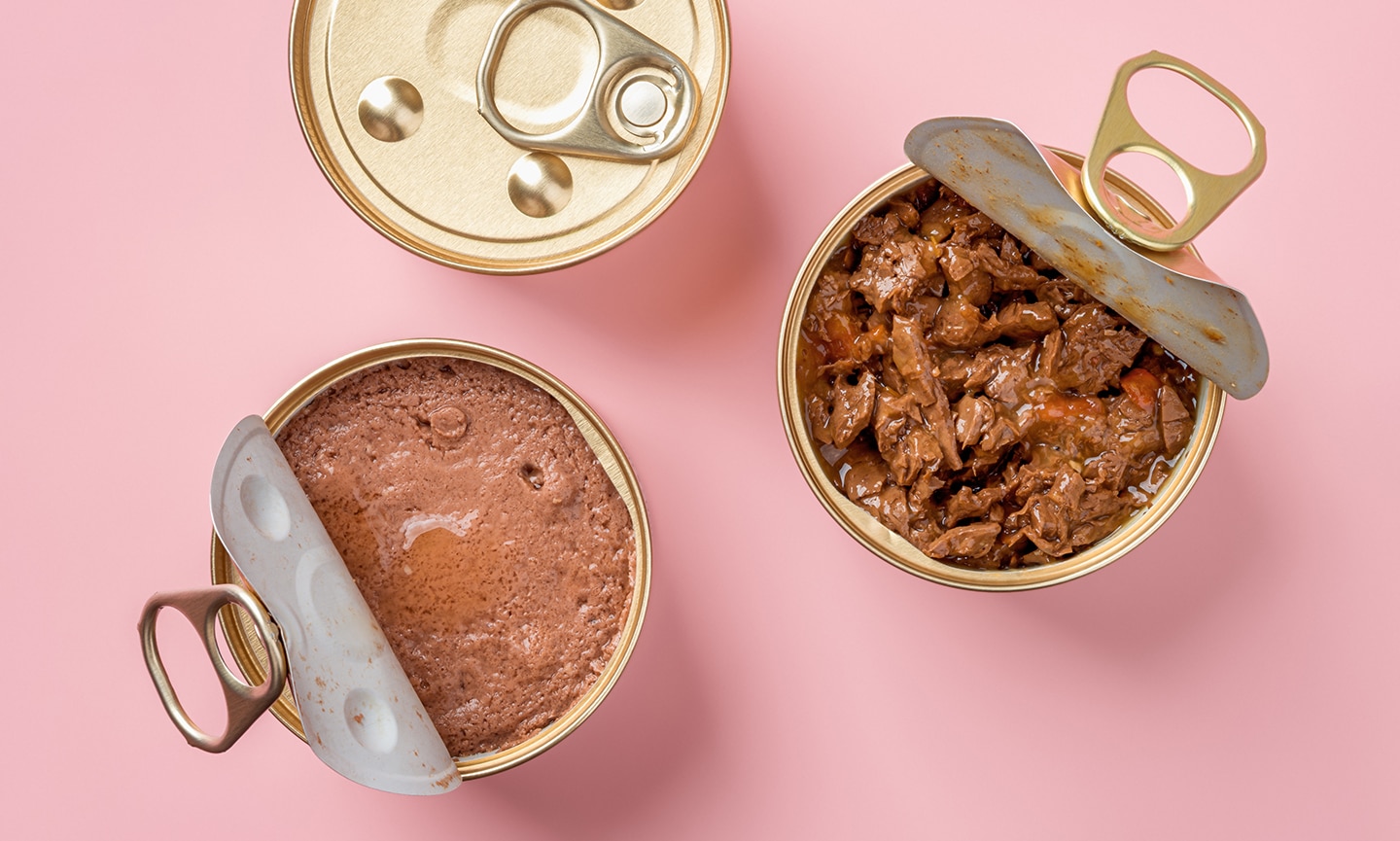
Wet cat food offers several advantages that are important for the overall health and well-being of cats. Here are some key benefits of incorporating wet food into your cat’s diet:
1. High Moisture Content
One of the most significant benefits of wet cat food is its high moisture content. Many of our modern house cats evolved from desert-dwelling wild cats who got all the water they needed from their prey. This has left cats with a low-level thirst drive.
Wet food has a moisture level about seven times higher than the typical dry food. The higher moisture content in wet food can help your kitty take in the optimal amount of water to stay healthy.
Consuming enough water is especially important for long-term kidney and urinary tract health, says Dr. Joshua Montgomery, DVM, a veterinarian at BetterVet in the Seattle, WA area.
More specifically, water is essential for helping your cat’s kidneys filter out impurities from the body. Insufficient hydration can impair this process, potentially leading to bacterial infections and the development of crystals or stones in the urinary tract. If these issues are not addressed, they can become life-threatening for your cat.
Water also helps keep things moving in the digestive tract, which is important for preventing constipation.
2. Rich in Protein, Low in Carbohydrates
Cats have a biological need for a diet that’s high in protein and low in carbohydrates, as this mirrors the macronutrient profile of prey they’d catch in the wild. Wet food often has a higher proportion of protein and fewer carbohydrates than dry food. This combination can be especially beneficial for maintaining lean body mass and managing diabetes mellitus.
3. Weight Management
“Wet food is generally lower in calories compared to dry food, which helps keep cats trim and promotes a longer, healthier life,” says Dr. Montgomery.
Maintaining a healthy weight is important for a cat’s health, as carrying excessive weight can contribute to health issues such as arthritis, heart problems, blood pressure problems, respiratory problems and diabetes.
Additionally, because wet food has a higher water content than kibble, a cat will feel fuller than when eating dry cat food only, says Dr. Luisana.
4. Easier To Chew and Digest
The soft texture and high moisture content of wet food make it easier to chew and digest than dry food. This can be particularly advantageous for kittens, senior cats and cats with dental issues, such as dental disease, or sensitive stomachs.
5. Enhanced Palatability
Cats tend to prefer the taste and texture of wet food over dry kibble. Its aroma and consistency are often enticing to cats, which ensures they get the nutrition they need.
Wet cat food also comes in a range of flavors and textures, which can help prevent boredom with meals and encourage a healthy appetite in cats who might be finicky eaters.
5 Disadvantages of Wet Cat Food
While wet cat food offers numerous benefits, it also comes with certain drawbacks that pet parents should consider.
1. Shorter Shelf Life After Opening
Once opened, wet cat food can spoil quickly if not stored properly. Opened cans must be promptly refrigerated and used within a few days, making it less convenient than dry food, which can last for months after opening when properly stored.
2. Less Convenient for Feeding
Unlike dry food, which can be left out for cats to graze on throughout the day, wet food cannot be left in a cat’s bowl for long periods due to the risk of spoilage.
Wet food left in your cat’s bowl should also be discarded if not eaten within 20 to 30 minutes, says Dr. Luisana. This necessitates a more rigid feeding schedule.
3. Higher Cost
Generally, wet cat food is more expensive than dry cat food. The higher cost can be a significant factor for some cat parents, especially those feeding multiple cats.
4. Doesn’t Support Dental Health
Dry food can support dental health due to its abrasive texture, which can help reduce plaque and tartar buildup. Wet food doesn’t offer this benefit.
However, dry food is not a standalone dental hygiene solution and should not be fed to a cat for this reason alone. Incorporating teeth brushing and/or dental treats, such as Greenies Feline Adult Dental Cat Treats or DentaLife Dental Cat Treats, can significantly reduce the chances of poor dental hygiene, says Dr. Montgomery.
Using a washcloth with toothpaste to clean the teeth after eating “can go a long way to improving dental health and prolonging the time until a [professional] cleaning is needed,” adds Dr. Luisana.
5. Can’t Be Used Well in Puzzle Toys
Wet cat food can’t be used effectively in puzzle toys, such as PetSafe Funkitty Egg-Cersizer Treat Dispenser Cat Toy and KONG Active Treat Ball Cat Toy, which cat parents often employ to stimulate their pet’s mental and physical activity. Dry food, on the other hand, can easily be placed in these toys for cats to extract.
How Much Canned Food To Feed a Cat
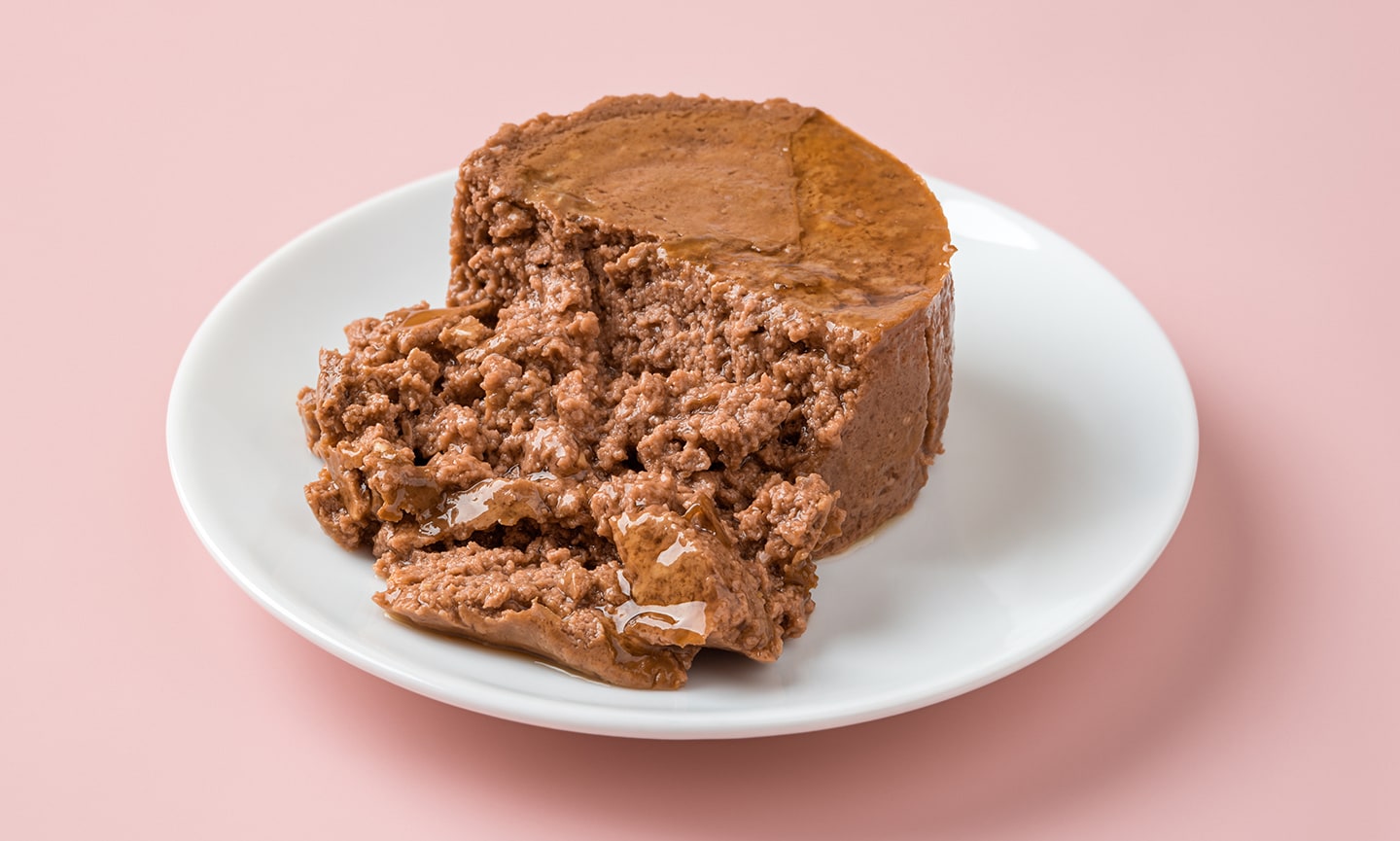
Determining the right amount of canned food to feed a cat is crucial for maintaining their health and preventing issues like obesity or malnutrition. The appropriate quantity can vary based on several factors, including the cat’s age, weight, activity level, individual metabolism and the specific type of canned food, says Dr. Montgomery.
Here are some guidelines to help you determine the right amount:
- Understand caloric needs: An average adult cat typically needs about 20-30 calories per pound of body weight per day. However, this can vary. For example, active or young cats typically require more calories per pound of body weight than less active or older cats.
- Read the food label: Canned cat food labels provide feeding guidelines based on weight and life stage. These recommendations are a good starting point, but remember they are generalizations and might not perfectly suit every cat, says Dr. Luisana.
- Consult with a veterinarian: For the most accurate advice, consult your veterinarian. They can weigh your cat, determine their ideal weight and calculate the daily caloric intake required for your cat to achieve and maintain this target weight.
- Monitor weight and condition: Regularly monitor your cat’s weight and body condition, advises Dr. Luisana. Adjust the food amount accordingly if your cat seems to be gaining or losing too much weight. A cat in ideal body condition should have a slight indent at the waist and you should be able to feel (but not see) their ribs.
How Often Should I Feed My Cat Wet Food?
How often you should feed your cat depends on various factors, including your cat’s age and health.
Here are some guidelines to help you determine an appropriate feeding schedule:
- Kittens: Young cats require more frequent feeding schedules due to their rapid growth and high energy needs. Feeding kittens wet food three to four times a day is common.
- Adult cats: Typically, adult cats do well with wet food fed twice a day.
- Senior cats: Older cats may have different nutritional needs and appetites. Feeding frequency can vary based on their health and preferences. Some may do well with twice-a-day feedings, while others might need multiple feedings, says Dr. Montgomery.
Learn how and what to feed your cat during every life stage.
It’s always advisable to consult with a veterinarian for personalized guidance, especially if your cat has specific health concerns.
How To Get a Cat To Eat Wet Food
Transitioning a cat to wet food or introducing it as a new component of their diet can sometimes be challenging. Cats can be particular about their food due to taste, texture or habit.
Here are some strategies to encourage a cat to eat wet food:
- Gradually introduce it: Start by mixing a small amount of wet food with their regular dry food. Gradually increase the wet food portion and decrease the dry food over five to seven days. This gradual transition helps your cat get used to the new texture and flavor without abrupt changes.
- Slightly warm the food: Slightly warming the wet food can make it more appealing to cats. Ensure the food is warm—not hot—to the touch to avoid any risk of burning.
- Choose appealing flavors: Experiment with different flavors and textures to find your cat’s preferences. Some cats might like pate-style wet food, while others might prefer chunks in gravy. Also, pay attention to the protein source (chicken, fish, beef, etc.), as cats often have preferences.
- Maintain freshness: Serve small, fresh portions of wet food rather than large amounts that sit out and become unappealing or hazardous. When serving wet food, store the unused portion in the refrigerator.
- Create a peaceful eating environment: Ensure your cat’s feeding area is quiet, safe and away from high-traffic areas. A calm environment can make mealtime more enjoyable and productive.
- Follow a consistent feeding schedule: To establish a routine, feed your cat at the same times each day. Cats are creatures of habit and thrive on a consistent schedule.
FAQs About Cats and Wet Food
Q:
Is wet food better for cats?
A:
Wet food can be better for some cats, depending on the individual cat’s health, age and dietary preferences. Cats with certain health issues like urinary tract issues, kidney disease and obesity tend to benefit greatly from a wet food diet, says Dr. Luisana.
However, other cats may have special needs or preferences that make kibble a better fit, she adds. It’s always advisable to speak with your veterinarian about the best choice for your cat.
Q:
Do cats need dry food?
Q:
Is it OK to give cats wet food every day?
Q:
How do I know if my cat needs wet food?
Q:
Is It OK to not feed your cat wet food?
Q:
Do kittens need wet food?
Q:
Is wet food bad for cats’ teeth?
Share:







